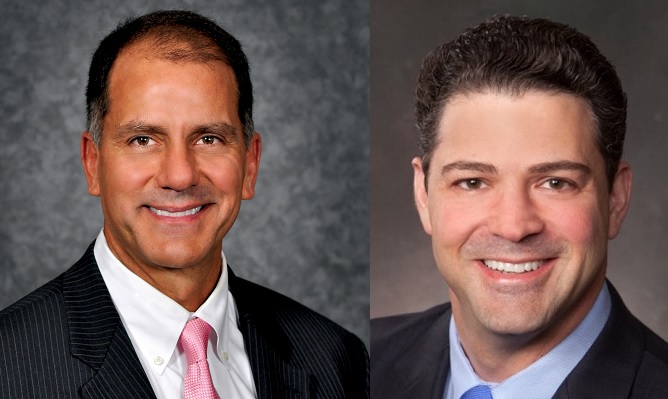
Panellists:
Rip Reeves: The manufacturing slowdown certainly interplays with the trade tension, and it can result in consequences for real profit.
In this economic cycle, it is impossible to have this discussion fully without understanding the political cycle and geopolitical cross winds we are facing.
Cameron Black: I do feel that all of these issues point to one major conclusion, which is, more volatility within investment portfolios in any market. The big question is, how you are going to position yourself to sustain it?
Rip: In these types of markets, I fully appreciate the luxury of being a strategic investor. If I were back on the front lines managing money like I did in the first 20 years of my career, it would be very challenging looking for tactical inefficiencies in today’s volatile market.
There are more factors now involved in valuation that are out of our control, such as geopolitical risk and debt levels. These issues, and others, make fundamental analysis more difficult.
Rip: Some of the quantitative tools we have access to suggest the risk-reward scenarios don’t look all that attractive, because of the flattened yield curve, low levels of rates and fully valued risk assets.
"In such a market, we have actually reduced the overall risk
profile of our global portfolio."
In global investment markets like we’re currently in, we don’t believe it is wise to stretch for incremental yield and/or potential return.
Over the past couple of years, valuations have continued to increase as large amounts of cash chase the same three or four asset classes.
In such a market, we have actually reduced the overall risk profile of our global portfolio.
Cameron: We are doing much of the same. Our focus is increasingly on quality and liquidity.
For much of the last 10 years, our portfolio probably had a little more structural risk than the average insurance portfolio, but, for the last two years we have been cutting back on marginal risk and we moving more toward the pack.
Cameron: For where we are in the cycle, the inflation piece is missing from the puzzle.
A lot of analysis of late cycle includes rising inflation, but we are just not seeing it. Also, how inflation is going to be sustained in the current global backdrop is eluding us.
Rip: I have a hard time believing one number is going to sway a major decision, such as a Fed cut or not.
Rip: As an insurance CIO, I have a slightly different vantage point insomuch that we don’t have to spend all our liquidity – or cash – should we not be convinced the reward is worth increased investment risk.
Thus, we have strategically reduced risk within our global portfolio over the past year.
It is important to have specificity about what we mean by “risk”, given there are several types – and measures – of risk.
Some of the ways we address it is by reducing the duration of the portfolio. Given we are at historically low yield levels, rates have only one way to move - at some point.
We also have reduced the portfolio’s credit risk by going up in credit quality in some allocations, while also keeping our high yield mandates at low duration targets.
Additionally, we have reduced our equity allocations to the lower end of our historical range below 10 per cent.
"Given we are at historically low yield levels, rates
have only one way to move - at some point."
These are all areas where we have increased our levels of dry powder.
However, we have increased the liquidity risk of our portfolio by increasing our investments in more illiquid areas, given we like the improved yield and forecasted return of these asset classes and have excess liquidity.
One of the relative benefits of the alternative sector is that performance is effectively agnostic – minus a credit event – to interest rates movements and equity volatility.
The core bond and equity allocations are naturally susceptible to market movements, so alternative asset classes help smooth portfolio performance and provides stability to our portfolio.
While we have decreased duration, credit quality and equity risks within the portfolio, we have increased liquidity risk.
Cameron: I agree; certainly, within the publicly traded sectors. We, too, have increased our non-core illiquid holdings. But even these have changed in character.
We are letting the majority of our private direct lending strategies roll off, and we are looking for more unique opportunities.
"We, too, have increased our non-core illiquid holdings."
We’re also looking to add a bit to investments that can focus on stressed or, should the need arise, distressed securities.
So, while I broadly agree with Rip, we are also starting to change the character of our illiquid book a bit, given the current backdrop.
Rip: I believe it will be more of the same – a continuation of volatility.
Cameron: I would note that a significant amount of the expected volatility will continue to come out of the political environment.
Cameron: It’s hard to see how we could fall as far as we did in the GFC but if we learned anything from that experience, it’s that you should never say never.
The pessimist in me is reminded of the expression, “things are never so bad that they can’t get worse.”